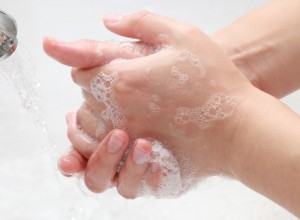Quick tip on how to get staff to wash their hands

Institutions that exhibit strong compliance with hygiene show strong declines in infections of all types.
In a recent article on FierceHealthcare, the editors compiled four videos from health care providers that encourage staff—everyone from custodians to physicians—to wash their hands. These videos had been posted on YouTube, and one of the points of the article is that hospitals and other institutions are turning to social media to cut down on hospital-acquired infections.
Why is this still a problem? It’s not as if we haven’t been taught from childhood that washing our hands is an important part of staying healthy.
The American Society for Microbiology and the American Cleaning Institute conduct “A Survey of Handwashing Behavior” every few years. The most recent study included a telephone survey, in which 96 percent of people said they always washed their hands after using a public bathroom. But reality tells a different story. In the latest survey, restroom observers reported that 85 percent of men and women observed at public places in Atlanta, Chicago, New York and San Francisco washed their hands after using a public bathroom.
Personal hygiene is especially important in hospitals—an environment in which the Centers for Medicare and Medicaid Services reduce reimbursements for “Never Events.” And institutions that exhibit strong compliance with hygiene show strong declines in infections of all types, including MRSA and C-difficile. Joint Commission position papers and numerous other studies confirm this. Yet as recently as 2009, the results of a 12-month multicenter collaboration assessing hand hygiene compliance rates at U.S. healthcare facilities (published in The American Journal of Medical Quality) showed that hand hygiene compliance at baseline was 26% for intensive care units (ICUs) and 36 percent for non-ICUs.
Why is this still a problem?
There are many reasons. But one of the chief ones is human nature. While most of us hope we will always act ethically or correctly in a situation, we often act differently when nobody is looking. Some people don’t think twice about ignoring the rules of the road when nobody else is around—like taking an illegal right turn on red or not using a turn signal. In the past, studies have shown that people in public restrooms wash more frequently when others are watching.
But what about hospitals? In a study published in 2011, cameras were placed in a 17-bed intensive care unit with views of every sink and hand sanitizer dispenser to record hand hygiene of healthcare workers, and sensors indicated when they entered a patient’s room. Before these workers received feedback, their compliance rate was less than 10 percent, but afterward it increased to 81.6 percent. In this case, it made a huge difference to let them know someone was watching.
Who is watching your staff? Perhaps you should be using social media as well to get the message across.
This article originally appeared in Ragan’s Health Care Communication News.
Sign up to receive our industry trends newsletter:
